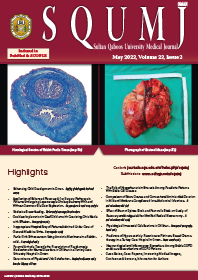Main Article Content
Abstract
Objectives: This study aimed to evaluate the efficacy of penile girth enhancement (PGE) using amniotic membrane (AM) as a graft in a rabbit model. Additionally, quantitative histological data of the structure of the penis were obtained by stereological studies. Methods: This study was conducted at the Histomorphometry and Stereology Research Center, Shiraz University of Medical Sciences, Shiraz, Iran. In this study, 20 adult male rabbits of similar age and weight were allocated to two groups: sham surgery and surgery+AM. Both groups underwent surgery in which a longitudinal I-shaped midline incision was made in the tunica albuginea on the dorsal surface of the penis. The surgery+AM group underwent PGE using AM as a graft. The penile length and mid circumference were measured using a vernier caliper before and two months after the surgery. Results: The mean total volume and diameter of the penis significantly increased in the surgery+AM group (P <0.03 and P <0.04, respectively). On stereological evaluation, a significant increase in the mean volumes of the tunica albuginea and corpora cavernosa was observed in the surgery+AM group compared to the sham group (P <0.01 and P <0.03, respectively). Additionally, the mean volume densities of the collagen bundles, muscle fibres, cavernous sinuses, and the total number of fibroblasts and smooth muscle cells increased in the surgery+AM group compared to the sham group (P <0.05 each). No infections, bleeding or other complications were observed. Conclusion: The use of AM as a graft is a method that shows promising results for material use in penile enhancement. Thus, it may be considered for PGE in the future.
Keywords: Amniotic Membrane; Animals; Histopathology; Penis; Augmentation.
Article Details

This work is licensed under a Creative Commons Attribution-NoDerivatives 4.0 International License.
